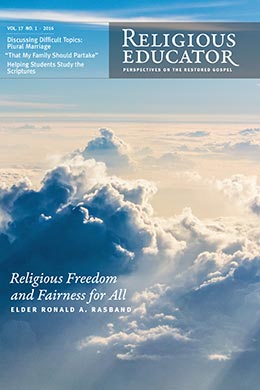Discussing Difficult Topics: Plural Marriage
Andrew H. Hedges, Rachel Cope, Gerrit J. Dirkmaat, and Thomas A. Wayment
Andrew H. Hedges, Rachel Cope, Gerrit J. Dirkmaat, and Thomas A. Wayment, "Discussing Difficult Topics: Plural Marriage," Religious Educator 17, no. 1 (2016): 10–21.
Andrew H. Hedges (andrew_hedges@byu.edu) was an associate professor of Church history and doctrine when this article was published.
Rachel Cope (rachel_cope@byu.edu) and Gerrit J. Dirkmaat (gerrit_dirkmaat@byu.edu) were assistant professors of Church history and doctrine when this article was published.
Thomas A. Wayment (thomas_wayment@byu.edu) was a professor of ancient scripture at BYU when this article was published.
Editor’s Note: This interview was held to discuss two recent essays on plural marriage posted at https://
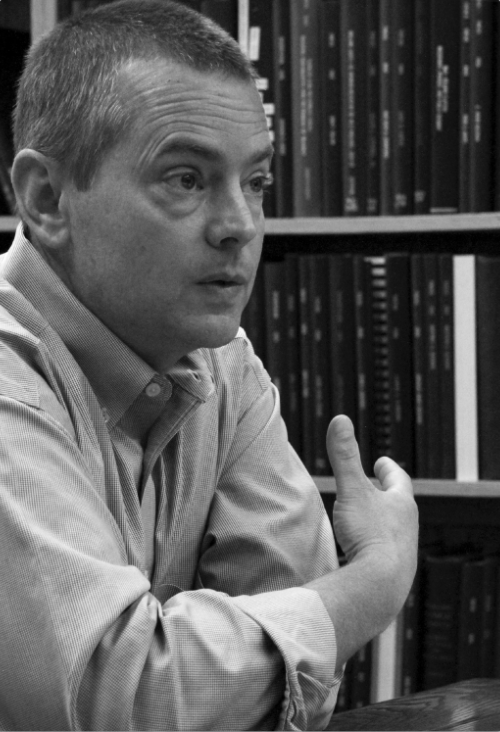 Thomas A. Wayment, discussion moderator.
Thomas A. Wayment, discussion moderator.
Wayment: Could you share a general background of the two polygamy essays and what intent is behind them? Of course, you’re not offering an official Church position, but what do you feel the essays are meant to address?
Hedges: As I understand it, these essays were written to help the general membership of the Church understand some of the reasons for the institution of plural marriage and also to explain how it worked, both in the beginning in Kirtland and Nauvoo and later on in Utah. And in the process of discussing how it worked, these essays are intended to answer some of the very sensitive and inflammatory questions that are out there, especially about Joseph Smith’s involvement. People have so many questions about when it began, who was involved, how many were involved, the ages of the women, and polyandry. So those issues are addressed as the first essay proceeds.
Dirkmaat: And these are part of a series of essays on gospel topics, so this is not just a random attempt at an essay on polygamy. There’s a context. And so there are other issues that are being addressed that, for a long time, had few readily available sources for those who were confronted with questions—for example, the translation of the Book of Mormon. This is something about which antagonists of the Church have, for years, been the primary purveyors of detailed information. So, if an average member of the Church is confronted with a statement like “You know Joe Smith used a rock and a hat to translate the Book of Mormon!” and that’s something this Church member has never heard before, his or her natural inclination is to go try to search. Hopefully, of course, the first place this person would want to go is to lds.org. But until now, if this member would have gone and searched there, he or she might not have found anything or, at the very most, wouldn’t have found anything very detailed.
So, I think in part, the whole range of these essays is attempting to provide a safe, well-researched explanation to some of these generally historical issues that are being used by enemies of the Church to destroy peoples’ testimonies. They span all kinds of topics—from violence in early Utah and the Mountain Meadows Massacre to blacks and the priesthood.
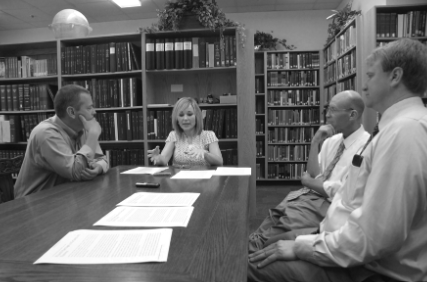 From left to right: Thom Wayment, Rachel Cope, Andy Hedges, and Gerrit Dirkmaat.
From left to right: Thom Wayment, Rachel Cope, Andy Hedges, and Gerrit Dirkmaat.
Wayment: Rachel, we talked about how these essays are addressing kind of a growing need for information. What would you say is the key need being addressed by these essays?
Cope: I think they focus on plural marriage in Kirtland and Nauvoo because Church members want to know how, when, and where these practices originated. From my experience, those are the details that students at BYU, and Church members in general, tend to have the most questions about. They want to understand Joseph Smith’s involvement in polygamy.
Wayment: The Joseph Smith period.
Cope: Exactly. They all know that Brigham Young practiced polygamy. They’re comfortable with that because it’s familiar to them. But a lot of people haven’t always known about, and few talk about, Joseph Smith’s involvement. Therefore, that is the area that seems to shake people. It’s the lack of familiarity that’s the main problem. When people hear a reference to polygamy in the Joseph Smith period, they try to find answers. Often, they read things from unreliable or antagonistic sources. So these statements are an attempt to put polygamy in context—to give church members some understanding of the earliest days of the practice.
Dirkmaat: This topic can be very controversial. When you read the statistic that in 1857 nearly half of the members of the Church had participated in polygamy in one form or another, that’s a far cry from what we often hear: “Barely 1 or 2 percent.” Historically, there’s been an attempt to minimize the level to which plural marriage was practiced, and I think that there are all kinds of reasons behind that. But the problem is that it communicates the message, “This is something that was wrong, and because it was wrong, we didn’t do it very much.”
Often when we talk about polygamy, the intent is to minimize it. Unfortunately, this type of explanation also implicitly minimizes the numbers: “Well, they didn’t do it very much.” But these new essays debunk a lot of those myths or at least help people reevaluate them.
Wayment: So does this essay also discuss the issue of plural marriages continuing even after the 1890 Manifesto from President Wilford Woodruff that banned them?
Cope: Yes. The ending of plural marriage was a process, rather than a single event. I think the essay addresses post-Manifesto plural marriages. It is providing context so that Church members understand that Wilford Woodruff didn’t issue the Manifesto in 1890 and then plural marriage was over and that was it. It’s far more complicated, so knowing that story is important.
Wayment: So, you all teach Doctrine and Covenants and Church history through the Nauvoo period and maybe even into the early Mormon period, and you have students who are wrestling with questions about polygamy. How are these essays being integrated into curriculum?
Dirkmaat: So as far as integration into a curriculum, I think that these essays are being utilized by the various institutions that are creating the Foundations of the Restoration course, so that will affect both the Seminaries and Institutes and the Church schools.
Wayment: So these essays would be foundational documents?
Dirkmaat: They would at least be a part of lessons. I don’t know whether or not every student would be required to read them, but I think that they are things that can be referred to, and an instructor would at least become familiar with the essays to better address questions. I can say that I think they will be more integrated as time goes on, given the fact that they’re on the Church’s website.
Wayment: Would it be ideal that every BYU student at some point will encounter these essays or at least know of their existence?
Dirkmaat: Definitely. And not just the ones on plural marriage, but on all gospel topics. In the world today, the primary form of anti-Mormon attacks is not theological in nature—it’s “gotcha” anti-Mormonism. It is to tell a member of the Church something that is “true” but placed in a negative context, that they think they should’ve known because they’ve gone on a mission, because they’re a BYU student or so forth, but that they’ve never heard before. When you’re in a position where someone is telling you something that you’ve never heard before, they have all of the moral high ground because you have no idea. Again, with the example about the translation of the Book of Mormon, the other person talks about Joseph Smith “putting a rock in his magic hat.” They get to set the terms of that context and create the initial impression—which is a very negative impression. And then they get to ask the follow-up question, which is the real killer: “Why has the Church been hiding this from you? What else is the Church lying to you about?” It’s a “gotcha” setup. But having exposure to these essays can eliminate that “gotcha” factor and can really change the conversation. Most people who are presenting these antagonistic things have no depth of knowledge themselves; they just read the fact off a blog two hours before they started talking to you about it. And so when they come to you and say, “Joseph Smith practiced plural marriage,” the response can now be, “Yes, I learned about that in my BYU religion class,” or, “I learned about that in church,” or, “I learned about that on lds.org.” Now, the other person doesn’t really have much further to go.
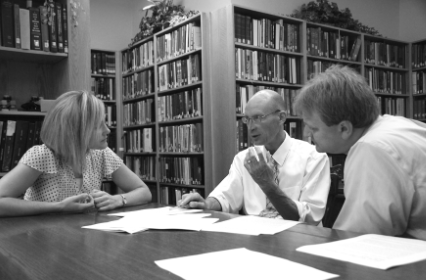 Rachel Cope, Andy Hedges, and Gerrit Dirkmaat.
Rachel Cope, Andy Hedges, and Gerrit Dirkmaat.
Hedges: That’s the larger benefit. These essays present information that will be new to many people right now, but that will become “old hat” as the years go by.
Dirkmaat: We found documents related to polygamy while we were working on The Joseph Smith Papers: Journals, Volume 2.
Hedges: That this information is out there now, that its available, that it’s officially from the Church—that is the big benefit. And it gets rid of the question, “What is the Church hiding from us?” The fact that the topic is being talked about erases the credibility gap. I’ve found that in many cases, it’s not the information itself that shakes Church members—it’s not knowing about the information.
Dirkmaat: I love being able to tell my students to go do a search on lds.org and type in polygamy. I love that these essays are the first things that are going to come up. And if the number-one search result is these essays, how could we think the Church is deliberately trying to hide its past? If you go to lds.org and you type in polygamy, you type in the Book of Mormon translation, you type in Mountain Meadows Massacre, these essays are going to be the very first search result. So anyone trying to find information from the Church on the Church’s website is going to find it.
Wayment: Rachel, you’re teaching about this issue as a woman. Can you share any insights that might be different? With polygamy discussions, women might hear different things. What would you say?
Cope: Yes, I think they do. It can be an especially difficult subject for female students. I’m not saying that it’s not difficult for men, but it’s a different kind of difficult. Many men approach the topic thinking, “That’s weird.” But women think about the women involved and often place themselves in their shoes—they recognize that being the person whose spouse is marrying different people is a very different experience. So they approach the topic of polygamy thinking, “I don’t think I could share my husband.” It is also important to recognize that the polygamy discussion can sound and feel too familiar to bad experiences women have had—by that I mean negative experiences with men, particularly situations involving abuse. That complicates the topic for women even further. The subject matter can be extremely devastating to someone who has been hurt. That’s why I think having a female teacher is helpful to some students. When a woman is approaching the topic, many female students will think, “She gets this, and my male teachers don’t.” Hearing from a woman who can talk through it and who can address the topic openly helps many struggling students develop at least some sense of trust. They want to hear from someone who is honest and who seems comfortable talking about the subject, while also acknowledging that the subject is uncomfortable, even if the answer is constantly, “I don’t know.” And “I don’t know” should be the most frequent answer when talking about polygamy.
It is important that students have opportunities to hear from someone who is female, someone who is a scholar, and someone who is a Church member who also doesn’t really like polygamy—because they can often relate to that person. I don’t like polygamy; there are things about it that I’m uncomfortable with, but I can still talk about it and have a testimony. I can think through it and be comfortable with how uncomfortable it can be, and seeing that makes a difference to students.
Obviously, not everyone is a female teacher. But everybody can be more sensitive, and we can all try to look at the subject matter from various perspectives. I think reading female accounts helps, as does sharing female accounts with students. When you read the words penned by a woman who entered a plural marriage—such as an account that declares that she will never be looked upon as a decent woman by all of her family and friends, ever again—things are put into a different perspective. The reader realizes that making this difficult decision was, for many women, a sacrifice and an expression of faith. While that realization cannot take all of the sting away, it does highlight the importance of seeing the nuance woven throughout the human experience.
It is also important that teachers are not afraid of students’ questions. When questions are asked, the teacher should never dismiss them. I don’t dismiss anything, even if somebody’s asking a question that doesn’t really fit the discussion. You can’t dismiss it.
Dirkmaat: She really hits on an important aspect of this. The fact is that when people attempt to minimize polygamy, what they’re dismissing is the faith of the women who were practicing it. I always make my students read several affidavits of some of the women who practiced it. For example, Lucy Walker Kimball’s account from 1902 is a perfect account because she talks about how she felt when she first heard about it.[1] She was revolted by the idea. Everything she’d ever been taught was that polygamy is wrong, that monogamy is right, and that’s the same reaction your students have. They live in the same culture, where everything they’ve been told is that polygamy is wrong and monogamy is right. So now students are almost in the same place as Lucy Kimball. And then they read that she was told by Joseph Smith that she could obtain a testimony of it on her own. And so she went out and prayed, and then bore her testimony that the Lord manifested to her the truthfulness of the principle, and she never doubted it since.
Students can learn from this. She had a negative reaction, but God manifested to her, through the power of revelation, the truthfulness of that principle. And so, as a student, I can still have a lack of understanding about polygamy. I might still not fully understand, or I might say to myself that I just don’t think I could ever do that. But here’s what I can’t do: I can’t say Lucy Kimball didn’t have God tell her that. We have to be careful that we don’t, in our attempt to not talk about something that’s difficult for us, deny the faith of the people involved in this.
Cope: I have noticed that many women in the Church, whether they’re eighteen or eighty, have the same concern, “Do I have to be able to accept polygamy or enter a plural marriage in order to go to the celestial kingdom?” I personally think that it’s really important to help students recognize that such questions are a nonissue. You can’t go back in time and put yourself in a different context and worry about whether or not you can do what people in the past did. I should not be asking myself if I could sacrifice my son on an altar or decapitate someone. We can’t base our testimonies on whether or not we could personally do the things others were asked to do.
Dirkmaat: Because no one’s asking you to do that!
Cope: People from earlier times weren’t asked, “Can you refrain from looking at pornography on the Internet?” That doesn’t fit their context. We’ll be judged according to what we’re asked to do, and we don’t need to worry about past commandments and past trials, because we don’t live then. It’s irrelevant.
I remember a student coming to my office, my first semester as a faculty member. She had read a book about polygamy—a really good book. She felt that it was very helpful, but she said, “I cried all the way through it.” She seemed to be ashamed to admit that—as if she was worried that her tears were a reflection of a weak testimony. I simply responded, “So did I.” That changed everything. She was comfortable from that point on—we had a great discussion, and she was able to work through her concerns.
As teachers, we cannot assume that preserving faith requires avoiding genuine concerns and raw feelings. We do not need to wear a mask or ask others to do so—we don’t have to pretend that difficult subjects are not difficult. I don’t think that helps anyone. Of course we should not say things intentionally to challenge peoples’ faith, because things can be taken too far. I simply believe that having an open, honest, and, when appropriate, one-on-one discussion can make a huge difference.
When discussing sensitive issues with students, we need to see individual needs and recognize where they are coming from. For example, I can sometimes tell, from questions or comments that a certain student makes when we’re having this discussion in class, that I need to seek that person out so we can talk further. It’s important to be aware of individuals and to have follow-up discussions when needed.
Wayment: Excellent. So I have two more questions. You’ve all spoken about a settling effect, that this feeling can help answer questions. As an analogy, I imagine going to a mechanic, and him walking in and saying, “Your transmission is bad.” And I walk away settled, knowing that my car can be fixed, but I know I now have to deal with the fact that I need a new transmission. When I read these polygamy essays, I had the very same feeling: “Well, I know it now, but how do I deal with that? Now I need to find a way to replace my transmission.”
Cope: Your question addresses exactly why these statements are important. If you require your students to read them, which I do, they come to class with a little bit of context and background. Then, you can teach them how to work through the things they don’t know, and in the process, teach them how to deal with ambiguity. Obviously, we cannot solve every question or address every single thing in these essays that relates to polygamy, because it’s far too complicated and messy. But we can have discussions, address questions and concerns, contextualize events further, and provide additional information that can really help students start to think through complicated circumstances. Having this kind of information and then having someone to help them think through it is extremely helpful, because it’s likely that nobody has ever taught them how to work through historical challenges before. We need to take advantage of the teaching opportunities these statements provide. We certainly should not assume that having students read the statements is enough. The gaps need to be filled in within the context of the classroom.
Hedges: This is the beginning of the discussion, not the end of the topic. I try to help them understand there’s a difference between our history and our doctrine. We’re studying history here, not necessarily doctrine in the sense that this applies to us today. I tell them flat out, “You probably don’t have a testimony of plural marriage like Lucy Walker does.” And I say, “You’re probably not going to get one—because, of course, you gain a testimony of anything in the gospel by living it. You gain a testimony of tithing by paying tithing, and you gain a testimony of fasting by fasting. Don’t worry about it if you don’t feel calm and settled about it.” And then I emphasize to them that they are in a position, however, to know that Joseph Smith was a prophet, and that he revealed, instituted, and practiced plural marriage as a prophet. And I do have that testimony, I tell them. Yes, I have a ton of questions about this. There’s a lot I don’t understand. But I do know that it was being directed by the Lord through a prophet, and that this was not a mistake. But by just giving them a little distance that way—that we’re studying the past—it helps them navigate through some of their questions and personal feelings.
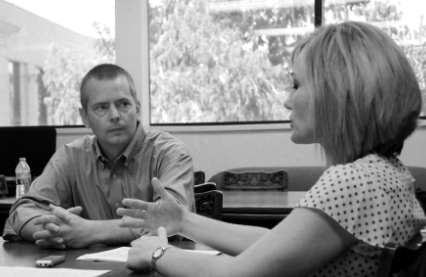 Thomas Wayment and Rachel Cope.
Thomas Wayment and Rachel Cope.
Dirkmaat: Really, the primary weight when you’re talking about lifting the weight really is never having had a discussion about it before. When you talk to youth groups that are much younger than an educated BYU student, you find it’s the same thing.
The greatest weight is lifted by the fact that we are going to talk about it. As Rachel said, if you have issues, you’re probably still going to have issues. We’re not asking you to practice polygamy! We’re asking you that through faith, you accept Joseph Smith as prophet, you accept that he received this as a revelation. And we say to ourselves, like so many things, I’m not going to know the full reason why. I’m not going to fully understand the Resurrection. I’m not going to fully understand the Atonement. There are plenty of things that we just won’t fully understand, and we’re OK with that.
Wayment: The question I’d like to end on is a little trickier. If you had a chance, in a respectful way, to say, “Here’s what the essays didn’t say that I wanted them to say,” what would you mention?
Dirkmaat: I will say that it’s important for people to understand the limitations that are placed on a five- or six-page essay on a topic that could literally spawn thousands of books. People who read these essays, or teachers who are using them as they teach, need to be cognizant that certainly not every source on polygamy is in that essay. Were the essay fifty pages longer, it could be more nuanced in dealing with the things that it deals with. If it were two hundred pages, it could be even more so. But in order for it to be effective and usable at all, it has to be relatively brief. So the relative brevity that makes it useful is also what makes it limited in its scope. Anyone using any of these essays should be well aware that the scholarship that informed these essays, the thinking that informed these essays, could be much more expansive if it were a different format. Obviously they could have been broader, but then they wouldn’t have been as effective.
Cope: I think that shows the importance of the teacher being familiar with the subject matter beyond these essays. We need to be familiar with the scholarship on the topic so that when students come with questions, and they will, we’re able to address the issue. We should not be stuck thinking, “I have no idea what you’re talking about. I’ve never heard that.” We need to be informed on both sides of the issue. We need to know what people are saying. We need to know what students are reading and encountering. We need to be able to address the various things that come up in the essays in a way that is historically informed as well as spiritually sensitive. Just bearing testimony isn’t going to answer some of the questions students have. We need to know the primary sources ourselves. We need to know the historiography as well.
Hedges: I would hope that every teacher who’s going to have his or her students read these essays would also have looked at the sources behind them. Look at Kathryn Daynes’s book More Wives Than One. Look at Brian Hales and his research. Look at what The Joseph Smith Papers have put out in bits and pieces. If a teacher has done his or her homework along these lines, he or she will be in a position to better answer those questions. Again, that’s why I say this is the beginning of a discussion, not the end. And part of it being the beginning of the discussion is having the teacher prepared beyond what’s here in the brief.
Cope: Whatever our training, whatever our academic background, we need to be familiar with historiography when we teach anything related to LDS history. Some of us might want to avoid books and articles whose conclusions or tone we disagree with. We need to remember that we don’t have to agree with everything we read. In fact, if you agree with everything you read, you’re doing something wrong. It is OK to think, “That source is completely off.” But you still need to know what it says, so that if your student has a particular question, you can address it in an informed way. Students are perceptive. We don’t want them to be thinking, “Oh, he’s afraid of this” or, “She doesn’t know what she’s talking about” or, “She’s never heard this before either.” We need to know what’s been said so that we’re not perpetuating the idea that this is material the Church doesn’t talk about.
Notes
[1] Lucy Walker, affidavit dated December 17, 1902, MS 3423, Church History Library, Salt Lake City.
